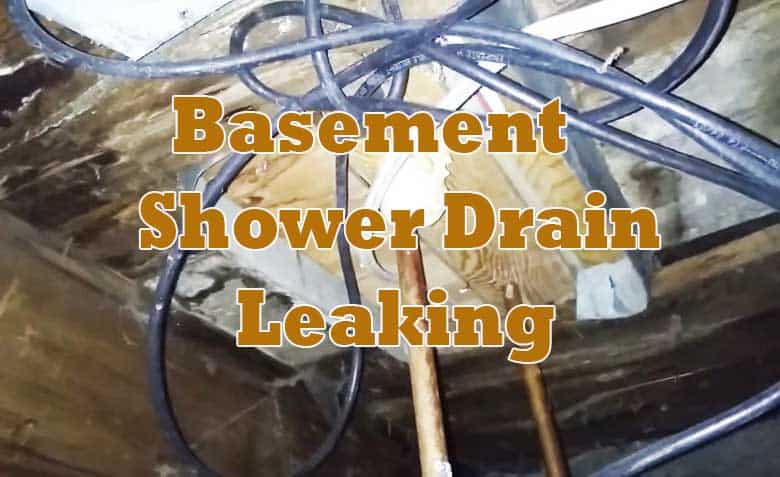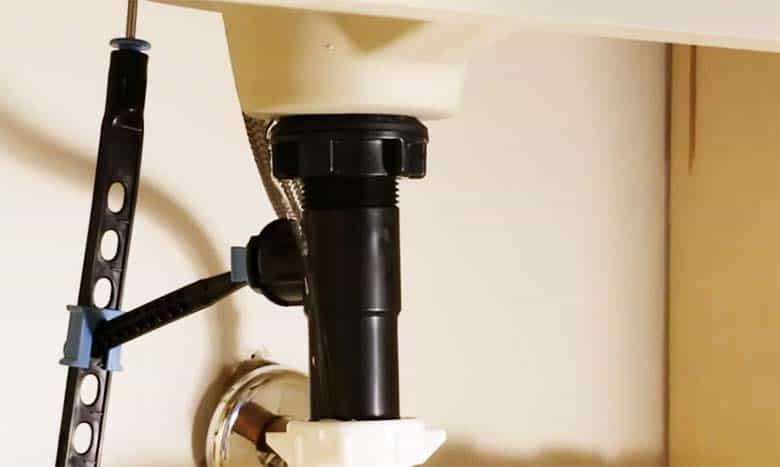You know it’s not a good sign when water drips through the basement shoe drain. Also, it can increase your blood pressure, knowing that something is wrong with the show drain in your basement. It happens when the shower drains leak in the basement.
The basement shower drain leaking reasons include a damaged drainpipe, the cracked gasket of the pipe, leaks around the shower faucet, and flange. You need to find the exact reason and fix the problem to stop the basement shower drain leaks.
So, let’s find the reason and solution for a leaky basement shower drain.
The Reasons for Basement Shower Drain Leakage:
When you find any dripping water through the basement drain, you would ask, “Why is my basement shower drain leaky?”
There’re multiple causes of leaky shower drainage in the basement. Firstly, the watertight seal of the rubber gasket can be damaged. Or, cracks in the P-trap or shower pan also could be responsible.
Cracks in The Drain Gasket:
When you look between the shower pan and its drainage, you will find a rubber gasket. The gasket with its rubber forms a watertight seal between the shower pan and drain pipe. Due to overuse or over time, the rubber gasket will damage.
Thus, the rubber gasket fails to provide a watertight seal, and the drain will start leaking. So, when you see water dripping around the basement, you should check the gasket immediately.
A Broken Shower Pan:
Although you can’t see cracks or damages in the shower pan, you can find it with a tricky solution. Fill the shower pan with water. Also, plug in the drain as you remove the cover. Now, carefully inspect the shower pan.
If it has cracks or damages, you will see the water level dropping, and it might start going through the cracked sections. Carefully check the basement to find exactly where the damage has occurred. You need to wait a few minutes for the inspection. It happens as the water from the shower pan will take time to travel the distance.
Leaks in The Drain Pipe:
The primary reason for leakage in basement shower drainage could be the drainpipe itself. The drain pipe connects the shower drain with the main drainage of your home through the basement. If it gets damaged or cracked, water will pass through the pipe.
Thus, you need to inspect the drain pipe through the wall. If you experience any dampness or leaks, you need to change the pipe.
Leaks in the P-trap:
The p-trap will work as a connection point between the shower drain and your home’s sewage system, including the shower pipe. When the shower is in idle condition, the P-trap keeps the water. Also, it stops the smelly gas of the sewage system from entering your home.
Due to oldness or overuse, sometimes the P-trap can also get damaged. So, when you check the drain pipe, you should also inspect the p-trap system. You need to remove the moisture and residues from the P-trap and drain pipe. Then, you can find out whether or not the shower drain pipe and P-trap are working properly.
Leaks in Shower Faucet and Drain Flange:
If you don’t find any leaks in the drain pipe and P-trap, you need to look for other reasons for dripping water from the shower drain in the basement. Firstly, check the shower faucet closely. When you use it daily for some time, eventually it might become loose.
When the faucet of your shower becomes leaky, water will slowly run through the main supply pipe. Also, the drain flange could be damaged and start leaking.
The metal drain flange actually overlaps the pan of your shower. Plumbers use Teflon tape or plumber’s putty to create a watertight seal between the shower pan and drain flange. Overtimes, the tape or putty will wear off and cause leaks.
You need to fill the shower pan and plug in the drain to inspect leaks in the flange. You will see water dripping around the watertight seal of the flange.
Cracked Tiles in The Bathroom:
At the worst, the tiles in your bathroom may get cracked to cause water leakage through the basement shower drain. When one or multiple tiles in the bathroom are damaged, water can slowly pass through the damaged tiles.
Consequently, your subfloor will be wet, and water will start dripping through the subfloor to the basement.
Tips On Fixing the Leaks in Basement Shower Drain
We hope you have inspected the real reason for the leaky shower drainage in your basement. So, it’s time you fix it.
Replacing the Drain Gasket:
If the leakage occurs due to a damaged drain gasket, you need to replace it soon. You need to buy the right size for the shower drain gasket to ensure the best watertight seal. We recommend taking the old gasket to the hardware store to get a perfect size.
Once you have received the right shower gasket, attach it to its place.
Fix the Drain Pipe and P-trap:
If the leak is caused due to cracked P-trap or drains pipe, you need to repair it. Since the main reason for a leaking P-trap is the loosened ring nut, you need to tighten it. You can use an adjustable wrench to tighten the ring nut of the P-trap.
If the leaks continue after tightening the P-trap nut, you will have to replace the entire P-trap system. You can do it easily by removing the locking nuts. Also, hold the drain water in a container. Now, thread in the drain pipes through both ends of the P-trap and tighten the locking nuts.
You need to apply Teflon tape on the leaky point for the drain pipe to fix it temporarily. Also, you might need to change the drain pipe with a plumber’s help.
Fixing the shower pan:
When the shower pan is damaged and causing leaks, you need to replace it. You might look for plastic or fiberglass shower pans instead of ceramic pans to reduce costs.
Also, installing the ceramic shower pipe can be tough as it needs brick mortar. However, you only need to replace the shower pan if the cracks are too large to repair. In most cases, the cracks are tiny enough to be repaired with a plumber’s putty or acrylic repair kit.
Firstly, clean the area to stick to the acrylic repair kit on the surface. When you have wiped off the surface, use a putty knife to apply the acrylic element on the shower pan cracks. Look at the user manual of the acrylic kit to know if it needs any hardener. If it asks you to use a hardener, you need to apply it.
Fixing shower flange and drain gasket:
The gasket is nothing but a rubber-made watertight seal. When it causes damage, you need to replace it. Remove the older gasket, get the exact size and replace it. Also, you might need to replace the shower flange. For this, unscrew it and then replace the new one. Don’t forget to tighten the screws of the shower flange.
Replacing the bathroom tiles:
When your bathroom tiles are causing leakage, you need to replace them. We suggest you call a plumber or tile worker for it to avoid further consequences. If you damage the subfloor, it will be truly costly.
Frequently Asked Questions:
Why is my shower leaking around the drain?
The leak around the shower drain may happen due to a cracked shower gasket, flange, or P-trap. We have mentioned the reasons and solutions in detail in our main discussion above.
How much does it cost to fix a leaking shower drain?
You can expect to pay from $50 to $600 to repair the shower drain leaks. The cost will depend on which part is causing the leaks. For instance, replacing the rubber gasket won’t cause you more than $25, whereas replacing the damaged shower pan can cause you over $250.
Final Words
We understand that seeing the basement shower drain leaking can be nerve-shaking. However, you shouldn’t worry too much as you now know the real reasons for the shower drain leaks in your home basement. Also, we have described the solutions. So, it should be useful in maintaining the basement and shower drain in good condition to increase your property value.
I am James Martin, An professional plumber with more than 16 years of experience. The main purpose of my writing is to share my experiences of helping others. Be with me and explore bathroom plumbing, installation, cleanness ideas, and many more.





Pingback: How to Fix Bathroom Sink Drain Leaking Around Threads
Pingback: Basement Floor Drain Cover With Hose Connection: (Fix It!)